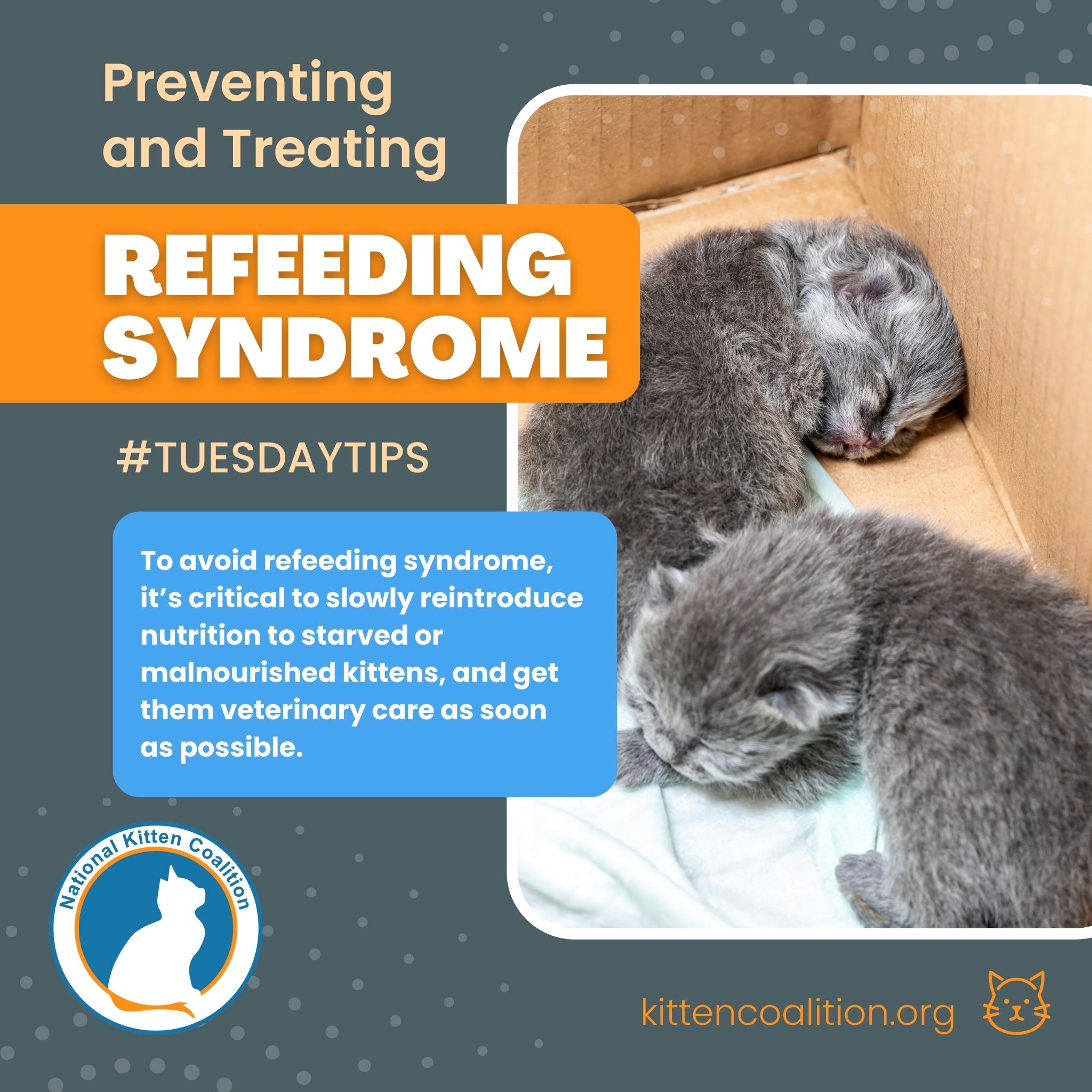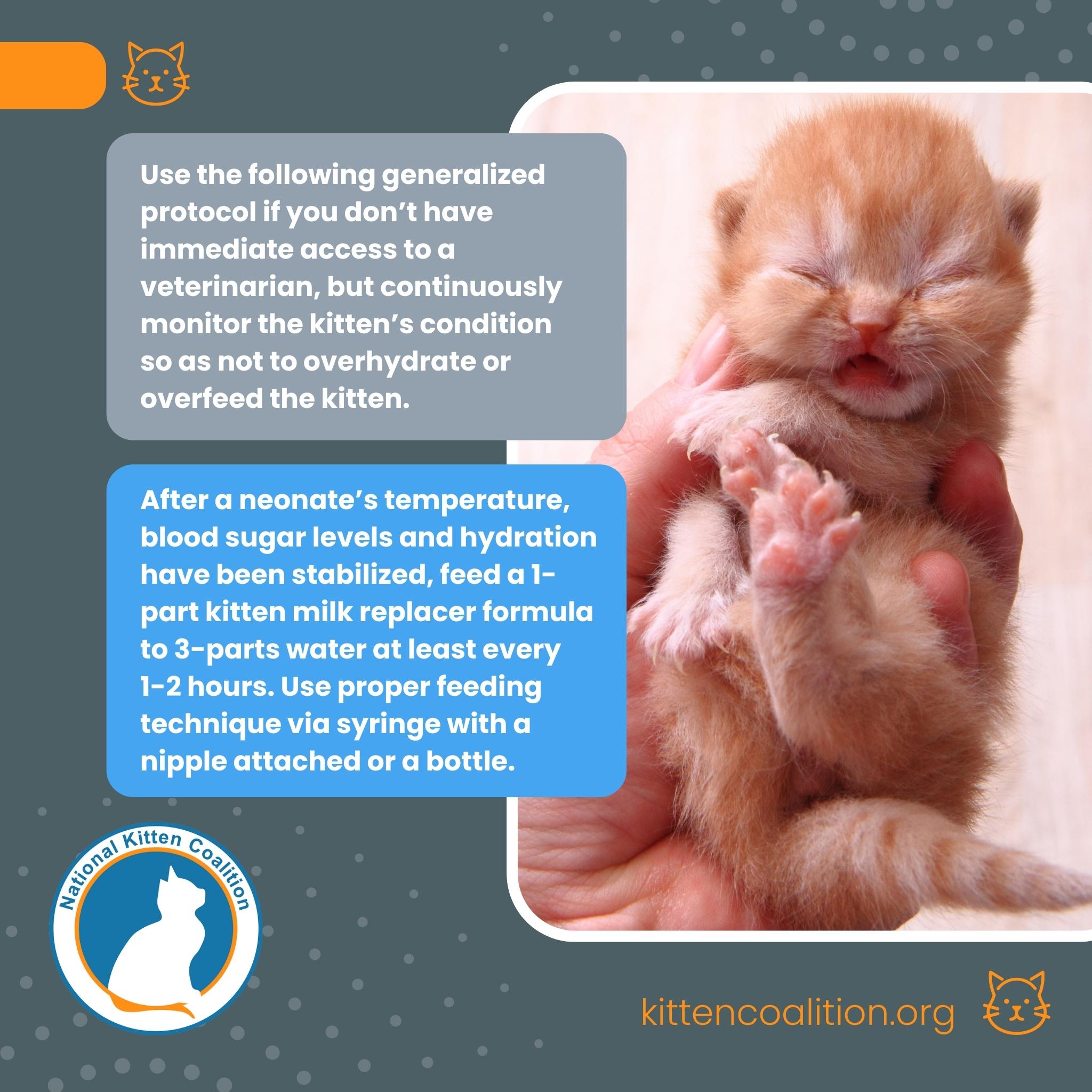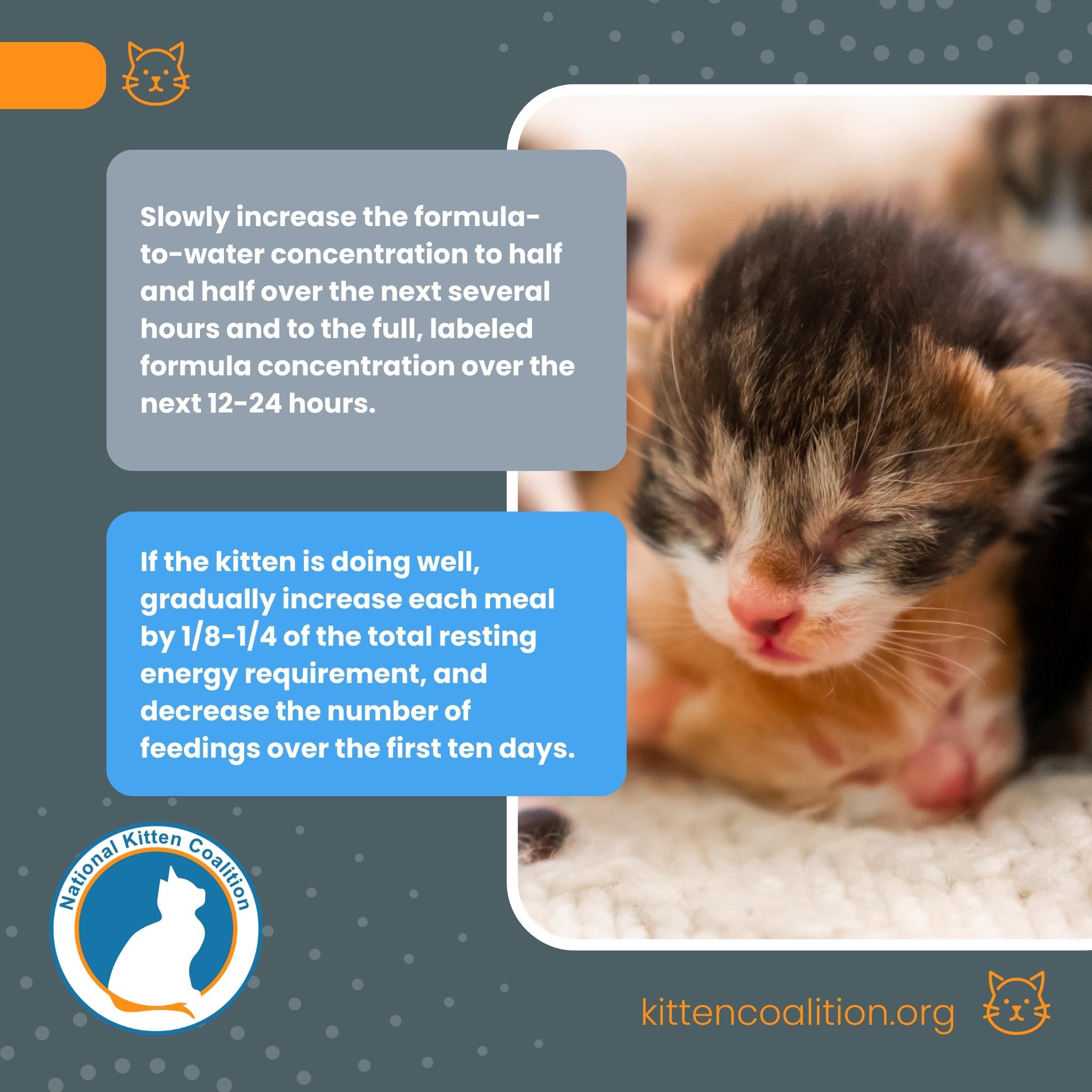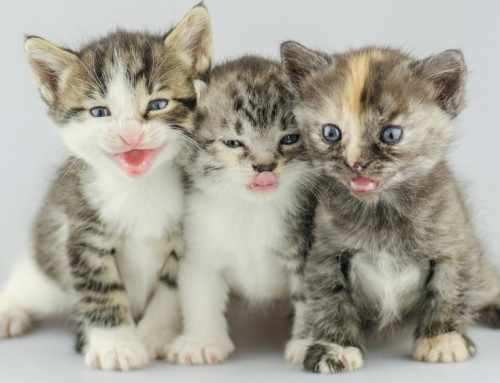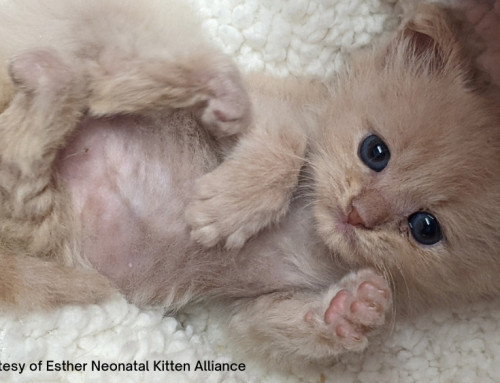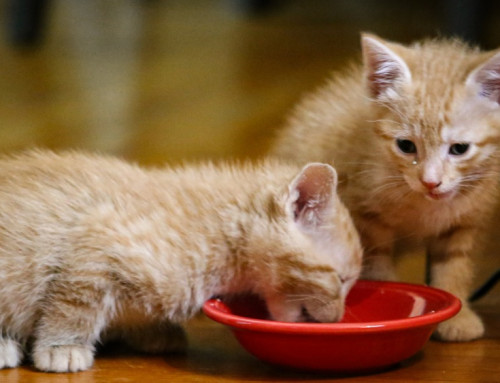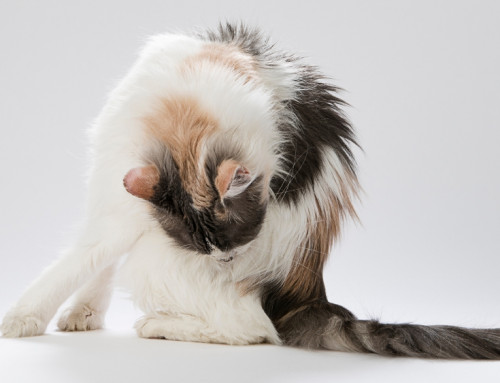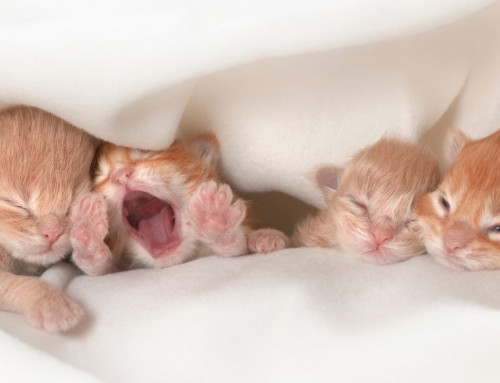Share this resource or email it to a friend!
This is part 2 of a 2-article series on refeeding syndrome. It focuses on prevention and treatment. Part 1 focused on understanding the causes.
To prevent a kitten from having further complications from malnutrition or starvation, it’s critical to slowly reintroduce nutrition in order to avoid refeeding syndrome. Providing nutrition should only be done after the kitten’s temperature, blood sugar levels and hydration have been restored to normal values. Seek veterinary assistance immediately for kittens in need of critical care.
The following feeding protocol is generalized and can be used if immediate access to a veterinarian is not available/possible. However, this requires continuously monitoring the kitten’s temperature, condition and hydration status. Adjustments to the feeding protocol must then be made accordingly so as not to overhydrate or overfeed the kitten.
Important note: Starved kittens have impaired immune systems and therefore should be placed in foster homes or housed separately from other animals in an animal shelter, veterinary clinic or private home to prevent them from acquiring an infectious disease.
Neonates
Neonatal kittens are kittens who are unable to eat, urinate or defecate on their own. After a neonate has been stabilized, milk replacer can be introduced as a one-part kitten milk replacer formula to three-parts water. An oral electrolyte solution, such as Pediatlyte® or Kitten Lyte™, should not be used in place of water, but can be given in a small amount in addition to the milk replacer at each feeding. In order to accurately monitor the amount of liquid being consumed, it’s best to use a syringe with a nipple directly attached. There are many guides available on proper positioning and technique while feeding a neonatal kitten.
Depending on the age and hydration status of the kitten, this dilution of formula should be fed every 1-2 hours. The hydration status can be checked at each feeding session by observing both the color of the kitten’s urine and the status/feel of the gums. A well-hydrated kitten will have clear to light yellow urine and moist gums. When the kitten obtains normal hydration, the concentration of formula can be slowly increased over a 12-24 hour period to a 50:50 mixture. This process of slowly rehydrating allows the kitten’s GI tract to better absorb nutrients and helps correct electrolyte imbalances.
If the kitten continues to do well, the amount of each meal can be gradually increased by 12.5-25%, and the number of feedings can be decreased over the first ten days. This protocol should continue until the kitten is gaining weight daily. There are many guides available on target amounts of formula per feeding.
Neonates should be weighed in grams; kittens 4 weeks of age and older should be weighed in ounces. All should be weighed at least daily before their first meal of the day. Daily weights may fluctuate slightly, but a kitten getting adequate nutrition should gain weight every day.
Weaned Kittens
Reintroduction of food for kittens who are weaned or are close to weaning will be similar to the process for neonates. Weaned kittens need to have their food, preferably wet kitten food, diluted with three parts water; food should be offered every 1-3 hours, and the ratio of food to water increased over a 24-hour period.
Force feeding a neonate or older kitten is never recommended due to the risk of both introducing liquid into the airway or lungs (aspiration) and creating an aversion to the food. A wet prescription bland diet is recommended initially because it’s formulated to be more easily digestible by a healing gastrointestinal (GI) tract.
A veterinarian may determine if certain supplements would be beneficial. For example, probiotics that are labeled for use in kittens can be added to the food or formula to promote further healing of the GI tract; high calorie gels or pastes can provide a larger amount of calories in a smaller volume. Some of these products can even help with inappetence. Other medication, such as antiemetics which treat nausea and vomiting, as well as appetite stimulants, should only be given when prescribed by and under the direct supervision by a veterinarian.
If a kitten does not have a swallow reflex and/or cannot hold up his head, bottle and free feeding are not recommended; a feeding tube needs to be considered. A veterinary professional can train individuals to give liquid nutrition via a feeding tube to a kitten who is not swallowing. Tube feeding involves gently inserting a flexible, rubber tube into the kitten’s mouth, down the throat and into the stomach. Proper training is vital as incorrect placement of a feeding tube can cause aspiration of the liquid in to the lungs, which can cause pneumonia.
In summary, it’s important to properly assess any new or sick kittens and stabilize them prior to feeding. In order to avoid refeeding syndrome, all kittens should be weighed daily, monitored closely and fed appropriate concentrations and amounts at proper intervals. Any kitten who is high risk for refeeding syndrome or experiencing symptoms of refeeding syndrome should be under the direct supervision of a veterinarian to ensure the best outcome.


